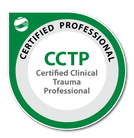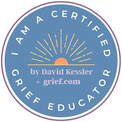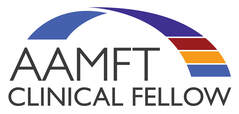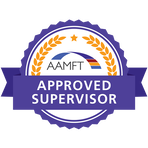|
“Self-doubt is real. Everyone has it. Having confidence and losing confidence is real, too, and everyone has been in that position.” --Venus Williams
Who do you think you are? You’re not smart enough to do that! What are you thinking to even try that? Does that internal voice sound familiar? We all have an inner critic. It is the voice of doubt and fear that arises when we venture outside of our comfort zone. The inner critic is sometimes a very vocal part that voices its displeasure. Our inner critic wants to keep us safe. It wants us to stay in the known and predictable. It wants everyone to like us and approve of us. When we reach for a dream, try something new, or make a mistake, it turns up the volume. So why is it that some people seem to move forward in confidence, while others cower under the voice of the inner critic? It all depends on how aware we are of it and how we talk back to it. It is not that people who have confidence don’t have an inner critic. They have just found ways to keep it quieter. I use the analogy that our inner critic is like our little toe. We all have one, yet we often don’t pay much attention to it. When we stub that toe, it is forefront in our mind and that is all we think about. When we are getting ready to do something new, challenging or important, it is like stubbing our toe. The inner critic activates, and the voice suddenly becomes all we hear. At any moment, we can focus our attention on our little toe and feel it. Our inner critic also has a body location. Some people feel it as butterflies or churning in their stomach, others feel it as a heaviness on their chest, while others feel a constricting in their throats. It can be almost anywhere in our bodies, but it is important to begin to notice where we feel the inner critic the most. When we can associate a bodily sensation with the voice, it gives us an important clue to start noticing that we are no longer in our authentic self and have slipped into the critic part. The awareness of the critic’s activation is the point of power we have to start noticing and talking back to it. As soon as we recognize the internal voice of our critic we can name it and make a decision. Are we going to allow it to continue to berate us, or will we choose to put on another, more compassionate part who will be able to handle the situation? Start noticing the voice of the inner critic and turn down the volume on it.
1 Comment
"I think that the most difficult thing is allowing yourself to be loved, so receiving the love and feeling like you deserve it is a pretty big struggle. I suppose that's what I've learnt recently, to allow myself to be loved." --Nicole Kidman
Many of us are natural givers. We enjoy helping and supporting others. We take pride in giving and look for ways to be in service to others. But, are we as good at receiving? Only when it is a two-way street are we able to fully benefit. The same pride that we take in giving, often blocks our receiving. We would rather struggle and do it ourselves then allow others to help us. I once heard the story of a minister, who was in the hospital after an accident which left him with two broken arms. One of his congregants came and offered to feed him his meal, but in pride he declined the congregant’s support. A nurse, who was in the room asked the minister about the interaction after the congregant left. The minister stated that it is his job to take care of his congregants and he could not allow one of them to take care of him. The nurse asked if he gave sermons about the joy of giving. The minister replied, ‘Of Course! As the Bible says, It is more blessed to give then to receive!’ But then the nurse pointed out that the minister robbed the congregant of the joy of giving by refusing to receive. I often imagine the flow of giving to be like a water wheel. Many of us are good at giving the water, but in order for the buckets to fill, we need to receive the water from the stream. If there is a dam blocking the flow of water, we are unable to receive and will eventually have nothing to give. In our pride, many of us build a dam that blocks our ability to receive. We then give until the point of burnout. When we limit what we receive, we limit what we have to give. The wheel can't move unless it receives. Unfortunately, society seems to have the perception that it is a weakness to receive. We are told to pull ourselves up by our bootstraps and do it ourselves. The truth is, we are an interdependent species. We do depend on others for our survival. When we allow ourselves to receive gratefully, we are practicing self-care. We can say ‘thank you’ with a grateful heart when someone gives us a compliment, offers to pay for our lunch, or helps us with a task. We can choose to accept the support of others and keep the flow moving, instead of adding to our dam. What blocks in receiving are you willing to remove in order to restore the flow? “All life demands struggle. Those who have everything given to them become lazy, selfish, and insensitive to the real values of life. The very striving and hard work that we so constantly try to avoid is the major building block in the person we are today.” --Pope Paul VI
We live in an unpredictable world. Just when things seem to be going well, a storm hits and things change. We all have to face the storms. They are an inevitable part of being human. But, why is that some people seem to weather the storms of life unscathed while others struggle? I often use the analogy that it is like we are on a boat anchored by the shore. When the storm comes, if we don’t have a strong anchor, we will be pulled out to sea. We need a strong anchor to keep our boat secured during the storm. So, what makes for a strong anchor? It is clarity on what we value and living in alignment with our values. Every time our words, behaviors and actions are in alignment with our core values, we add weight to our anchor. The more we live life from our values, the stronger our anchor becomes. When we forget and get busy with things we don’t value, our anchor weakens. Often, it is only when the storm hits that we notice we are without a strong anchor. We find ourselves drifting aimlessly in confusion and without direction. Every day is a new opportunity to demonstrate our values. We can choose to interact with others in ways that are in alignment with who we say we want to be, or not. When we notice that our anchor is not as strong as we would like it to be, it is an opportunity to decide how to strengthen it. Every moment is a choice point for how we want to show up with the people around us and for ourselves. Every interaction can either strengthen or weaken our anchor. The choice is ours. What can you do today that will strengthen your anchor? “The significant problems we have cannot be solved at the same level of thinking with which we created them.” --Albert Einstein
Life has a way of putting obstacles right in our way. It happens frequently. We finally decide that we are ready to take action and go for what we want, when an unexpected expense or event pops up that stops us. Many people take that as a sign that it wasn’t meant to be, so they turn around and shrink back into their old life. What if that block in our way was just a test to see if we really wanted what was on the other side? When I work with clients, one of the first things I ask clients is what they want. Solution-Focused Therapy refers to this as the ‘Miracle Question.’ It is a question that asks clients to imagine that they went to bed tonight and a miracle happened, which removed all of their problems. When they woke up tomorrow, what would be different? What would indicate that all of their problems were resolved? Asking this question is a great way to help people clarify what they want in life. What is important to them? If they didn’t have the limits and confines of their current life, what would they want for their life? How would their relationships be different, how would their jobs be different, how would the way they see the world be different? When clients are clear on what they want, the question then focuses on what is blocking them from getting what they want. This is trickier than it sounds. Most people are not aware of what the blocks are because we become oblivious to them. They become such an everyday part of our life, that we are blind to what is blocking us and unaware of our power to remove it. The beauty of the ‘Miracle Question’ is that it puts people in the mindset that the miracle has already occurred, so they are able to imagine life on the other side of the block. I often imagine the obstacles to be like a one-way valve that stops us when we are trying to get to our dreams from our current perspective. But, if we start on the other side, where the dream is and imagine ourselves coming from the dream, the valve opens right up and we are able to put on our dream and bring it to us. When we start imagining our self as already having what we say we want, new ideas and possibilities open up that bring what we want to us. So, the next time that obstacle is in the way, think about what life would be like on the other side. How would I think, how would I talk, how would I act if I had what I say I want? Come from that place and see what new ideas come to you. “Love is three quarters curiosity.” --Giacomo Casanova
As I work with couples and individual clients there is one word that I use frequently; Curiosity. I encourage couples to become more curious about their partner and I encourage individuals to become curious about themselves. Curiosity is key to breaking free from old patterns, but what exactly is curiosity and why is it so important? Dictionary.com defines curiosity as “the desire to learn or know about anything; inquisitiveness.” Curiosity is a natural state. Watch any young child and they are immensely curious about the world around them. They want to know everything and ask ‘why’ relentlessly. But, as they grow older and begin to learn more, that curiosity takes on a different shape. There is excitement and energy when we are curious, but unfortunately, once we believe we know, that curiosity fades. We feel satisfied in our answer and we move on. There are four basic stages of learning, as developed by Noel Burch. We start by not knowing, what we don’t know, which he calls Unconscious Incompetence. It is not on our radar and we have not put any energy into thinking about it. We are blissfully unaware. The second stage is when we know what we don’t know, Conscious Incompetence. We realize that there is something we need to learn. Mistakes are common in this stage as we develop a new skill. The third stage is when we know what we know, Conscious Competence. We begin to feel competent in our knowing, although it may still take a significant amount of focus and energy to perform the task successfully. The last stage is when we gain mastery of what we know, which he refers to as Unconscious Competence. Our knowledge is integrated and fluid. We are able to perform the task with ease. When it comes to relationships and emotional understanding, many of us, unfortunately, have a skewed perception. We think we know who we are and who our partner is, so we lose curiosity. We assume that it is obvious how we are feeling and no longer put any energy into exploring what the anger or sadness truly is. Unless we have done some significant work in this area, most of us fall into the first stage of learning when it comes to our own emotions and knowing our partner’s emotional landscape. We are unaware that there is more to know. Admitting that we don’t know what is going on internally is critical because it gives us permission to become curious. Stage two is when we begin to focus our energy and become inquisitive. This is where the magic happens in relationships and self-development. It is where we begin to get clear on who we are and get to know our partner intimately. Curiosity is critical for growth. It changes you from the inside out. Will you dare to be curious? "For me the greatest beauty always lies in the greatest clarity." --Gotthold Ephraim Lessing
‘Mindsight’ is a term developed by Dr. Daniel Siegel to describe our brain’s ability to be aware of itself. As humans we have the unique ability to think about our own thinking. We can focus our attention internally to notice our emotions, behaviors and thoughts. We can choose to change them once they are in our mindsight. By turning our attention inward and developing an awareness of our internal landscape we gain clarity in our lives. One of the most important pieces of mindsight is the understanding of neuroplasticity. Scientists used to think that the brain stopped growing by the end of childhood and was then fixed. We now know that the brain is capable of learning and developing throughout the lifespan. As we experience the world, neurons in the brain fire and create pathways for our experiences. By focusing our attention, we strengthen existing neural pathways and create new ones. The brain, through neuroplasticity, is able to create new patterns of firing which allow previously separated areas in the brain to integrate. Through focusing our attention on our internal experiences, the brain becomes more interconnected and adaptive. Dr. Siegel outlines three components that are critical to developing our mindsight and creating clarity in our lives. They are openness, observation and objectivity. Openness is being receptive to whatever emerges as we focus our attention inward. Observation is the ability to perceive our internal experiences from a distance. It is the ability to step back from our experience to notice the experience we are having. Objectivity is the ability to discern the difference between our experience and reality. We can perceive our internal experience without being swept away in it. By utilizing openness, observation and objectivity of our own internal experience, as well as to what is going on inside others, we are able to connect in new ways. The more mindsight we develop, the more our brains change and the more clarity we begin to have in our lives. Make this the year of mindsight growth. Based on the book Mindsight: The New Science of Personal Transformation by Daniel J. Siegel, M.D. “Competition has been shown to be useful up to a certain point and no further, but cooperation, which is the thing we must strive for today, begins where competition leaves off.” --Franklin D. Roosevelt
As the parent of an ice hockey player and a lacrosse player, I have often thought about the contrast in behavior between sports and what I normally encourage in my kids. I have always encouraged them to share, but during the game, parents are yelling for them to “Fight for the puck!” I have taught my boys to avoid violence, but during the game, it is “Push him out of bounds!” There is a different aspect of our human nature that comes out during sports which I have become curious about. What is it about competition that changes behavior or are we by nature, competitive? When I think about competition I think about ‘survival of the fittest.’ Only the best team will make it to the playoffs, so it is important to take down the opponent in order to win. This led me to Charles Darwin, but I was surprised to learn that Darwin didn’t use that term at all! In his book The Descent of Man, Darwin argued that sympathy is what leads a species. Charles Darwin states, “In however complex a manner this feeling may have originated, as it is one of high importance to all those animals which aid and defend one another, it will have been increased through natural selection; for those communities, which included the greatest number of the most sympathetic members, would flourish best, and rear the greatest number of offspring.” He noted that sympathy, what we would call compassion or altruism today, is the highest moral virtue. He predicted that our human evolution will be extending compassion to all people, animals and sentient beings. He used as examples people who risked their own lives to save people they didn’t know. Darwin wrote, “Looking at Man, as a Naturalist would at any other mammiferous animal, it may be concluded that he has parental, conjugal and social instincts…these instincts consist of a feeling of love or benevolence to the object in question…such active sympathy that the individual forgets itself, and aids and defends and acts for others at his own expense.” This doesn’t sound like sports at all! Edward O. Wilson, expanded upon this in his book The Meaning of Human Existence. Wilson states, “Within groups, selfish individuals beat altruistic individuals, but groups of altruists beat groups of selfish individuals.” He explained that when we are individually selfish, we try to beat out the competition within our group. Eventually that weakens the group down to one person who is the ‘winner.’ He compared that to groups who effectively work together. A group of people who aid and defend each other strengthens the entire group. When a group of people who are altruists meets a group who is selfish, the group that functions as a team has an advantage. It does go back to the saying, ‘There is no ‘I’ in team.’ We all need to work together to accomplish our goal. While I am still working to reconcile the lack of altruism in the competition of sports teams, what I do know is that playing sports is an opportunity for my kids to work together as a team and to see the benefits of cooperation. When they are encouraging each other on the team and working together they have a much better season. Perhaps a sports team is a microcosm of our world. What would happen if we all realized that the entire human race is on the same team? By separating ourselves into small teams, whether it be by country, political affiliation, race or religion we are like the individuals that weaken a team by acting selfishly. We are weakening ourselves by separating out and missing the opportunity for altruism towards mankind. Maybe now is the time for us to evolve into Darwin’s ‘survival of the kindest’ idea. “When your values are clear to you, making decisions becomes easier.” --Roy E. Disney
There are times in our lives when things seem to be going smooth and the journey is uneventful. Other times the ride is rough. What is the difference between these times? While we can’t control much of what happens in life, we can choose how we respond to life events. We can choose to either be in alignment with our core values and who we say we are, or we can be out of alignment. If we say that we are compassionate and caring, yet yell and curse at the person who cut us off in traffic, we are not in alignment with our values. I think of our values as the lines on the road of life. If we stay within the lines, for the most part the ride is smooth. If we start to drift off, it gets pretty bumpy. If we continue to ignore the bumps, it isn’t long before we start crashing into things. The longer we live out of our values, the rougher the ride is. In order for us to be able to detect when we are off the road of life, we first need to get clear on where the road is. This comes from identifying our core values. What are the values that are most important to me? I give many of my clients a homework assignment to come up with a list of at least ten core values that they hold. We then go through the list, one by one, and rate them on a scale from 1-10 to indicate how often they live the values they say they hold. It is interesting to begin to self-reflect and recognize how often we are off the road of our values and how difficult it is sometimes to stay on the road. We all have an internal guidance system which warns us when we are beginning to drift off the road. There is a feeling of being off or what I like to call the ‘yuck feeling’ when we are drifting. It is easy for our minds to ignore that feeling and continue on. Our minds are great at justifying why it is better to tell a little lie then to follow our value of honesty, but that is when we are drifting off the road. Becoming aware of our values and then listening for that internal guidance system to warn us that we are drifting, can get us back on the road of life. How would living in your values and staying on the road of life change you? “The blow of a whip raises a welt, but a blow of the tongue crushes the bones. Many have fallen by the edge of the sword, but not as many as have fallen because of the tongue.” --Ben Sira 28:17-18
The past couple of posts have discussed the work of Brené Brown and the research she has done on shame. This week, we explore how shame manifests in the way we talk to others. As I read Brené’s work, one of the things that struck me was how powerful our words are. When we ourselves are not feeling good and are in a place of shame, an often automatic response is to shame others. Shame is a tool to control others and is often used as a form of discipline. Although we no longer use the ‘dunce hat’ on the child sitting in the corner as a form of punishment, many of the techniques and ways we discipline are equally as shaming. This post is difficult for me to write, because as I start looking back at things that I said and did as both a parent and teacher, I now realize how much shaming I did, often in the name of discipline. It is not easy for me to look back and recognize how hurtful some of the comments that I made must have been. I remember saying things like, ‘How old are you?’ and ‘Look at how nice everyone else is sitting.’ While at the time I was attempting to get my students to behave, I now understand the magnitude of the shaming words I spoke. When my son picked out an outfit that didn’t match and I argued with him to change into something more ‘appropriate,’ there was shame in implying that his choice of outfit was not good enough. Over and over I can recall times when I shamed. Increasing my awareness of the power of shame has affected the way I talk to others. I am now much more aware of whether my words are building someone up or shaming them. It is not easy though. I still find myself shaming without thinking about it until later. Being critical, judging or laughing at someone are all ways that we shame without realizing it. They are easy traps to fall into. Shame is a message that there is something wrong with me and I’m not lovable. It isn’t hard for someone to get the message of shame just from the tone of my voice, the way I look at them or my body language. We don’t even need words to shame! Becoming aware in the moment of the interaction takes practice. It is frightening to think about how many times I use shame without my conscious awareness of it. What would change if we all thought about the destructive force of shame and increased our awareness of it before speaking? Are you ready to communicate without shame? “Shame is the most powerful, master emotion. It's the fear that we're not good enough.” --Brené Brown
In the previous post I introduced the work of Brené Brown and the distinction she makes between shame and guilt. She identifies shame as a fundamental feeling of unworthiness or brokenness. It is something that is wrong with us. Guilt is recognizing that a behavior is not in alignment with our values or who we say we are. Guilt is focused on what was done and is therefore is something that we can change. There is an important distinction between shame and guilt in how we see ourselves and interact with the world. Dr. Linda Hartling’s research identified three strategies of disconnection, which Brené has termed our ‘Shame Shields.’ They are Moving Away, Moving Towards, and Moving Against.
|
Archives
April 2020
Categories
All
|
 RSS Feed
RSS Feed




